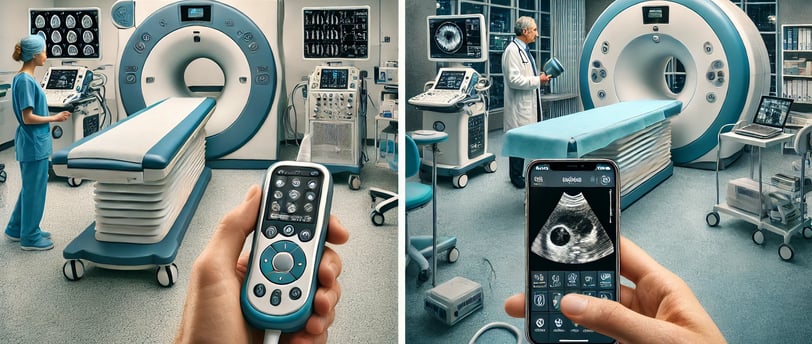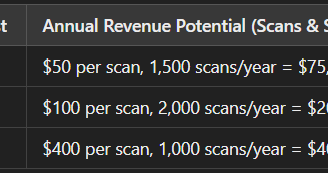Portable Imaging Devices: Are Handheld Scanners the Future?
Medical imaging has long been confined to bulky, room-sized equipment, limiting access and mobility. But with advancements in miniaturization, AI, and wireless technology, handheld imaging devices are redefining point-of-care diagnostics. What once required a dedicated imaging suite can now be performed in an emergency room, clinic, or even in the field


The Leaders in Handheld Imaging
Handheld Ultrasound
Brands like Butterfly iQ, Philips Lumify, and Clarius have revolutionized ultrasound with smartphone-compatible probes.
Cost: $2,500 - $5,000, significantly cheaper than cart-based systems ($25,000+).
Benefits: Portability, affordability, and AI-assisted image interpretation.
Accuracy Challenge: Operator dependency remains an issue—training is critical for reliable imaging.
Portable X-ray Devices
Companies like MinXray and Fujifilm have developed wireless, lightweight X-ray units for bedside, emergency, and remote use.
Cost: $30,000 - $50,000, compared to full-sized digital X-ray systems at $150,000+.
Benefits: Rapid deployment in ICU, ER, and disaster response scenarios.
Accuracy Challenge: Lower power and reduced image resolution compared to stationary X-ray systems.
Handheld MRI & Advanced Imaging
Emerging technology: Hyperfine’s portable MRI (first FDA-approved).
Cost: $50,000 - $75,000, versus standard MRI units ($1.5M+).
Benefits: Bedside MRI scans in neurocritical care, stroke assessments, and developing regions.
Accuracy Challenge: Lower field strength means limited diagnostic capability compared to traditional MRI.
ROI and Cost Justification: Are Handheld Scanners Worth the Investment?
For healthcare administrators and biomedical teams, the decision to integrate handheld imaging hinges on cost-effectiveness, reimbursement, and long-term value.
Key Cost Factors:
✔ Lower upfront investment – Traditional imaging systems can be 10-30x more expensive.
✔ Faster patient throughput – No need for patient transport to an imaging suite, reducing workflow bottlenecks.
✔ Telemedicine & Remote Care – Supports home health, rural clinics, and battlefield medicine, opening new revenue streams.
✔ Lower maintenance costs – No dedicated room, shielding, or HVAC requirements.
Financial ROI Projection (5-Year)
DeviceInitial CostAnnual Revenue Potential (Scans & Services)Break-Even TimelineHandheld Ultrasound$4,000$50 per scan, 1,500 scans/year = $75,000Under 1 yearPortable X-ray$40,000$100 per scan, 2,000 scans/year = $200,0003-4 monthsPortable MRI$60,000$400 per scan, 1,000 scans/year = $400,0003-6 months
Overcoming Accuracy Challenges: Training & AI Integration
Handheld scanners are not replacing traditional imaging—but they are enhancing it. AI-powered enhancements are key to overcoming accuracy limitations:
🔹 AI-Assisted Image Interpretation – Reduces operator variability, making scans more consistent and reliable.
🔹 Cloud-Based Image Processing – Offloads data to higher-powered systems for better quality images.
🔹 Augmented Reality (AR) Training – Companies like Butterfly iQ integrate real-time guidance for users with less experience.
The key to maximizing ROI is effective staff training—ensuring that the right personnel use the right device in the right scenario.
Final Verdict: Are Handheld Imaging Devices the Future?
✔ For emergency, bedside, and remote care? YES
✔ For hospital-wide replacement of full-sized systems? NOT YET
Handheld imaging is not a replacement for high-resolution, high-power systems, but rather a valuable addition to medical imaging. Healthcare administrators looking to reduce costs, expand imaging access, and increase efficiency should consider strategic deployment of handheld scanners.
The future of medical imaging isn't about shrinking existing technology—it's about redefining how, where, and when we scan. And handheld imaging devices are leading that transformation.


